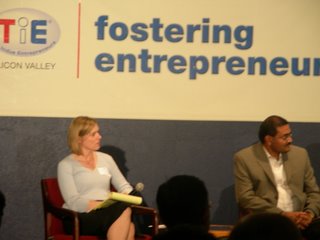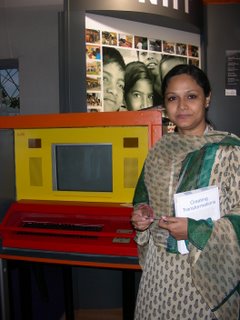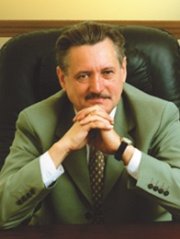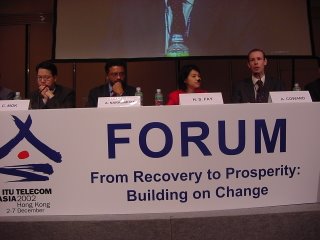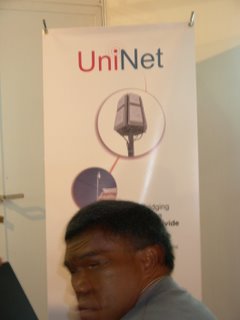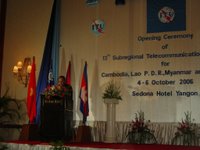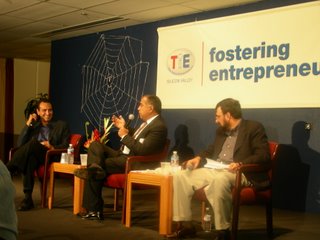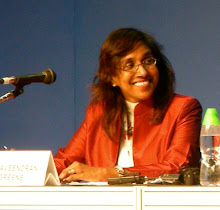

It was a delight indeed spending the evening with Prof AnnaLee Saxenian, author of "The New Argonauts: Regional Advantage in a Global Economy" and Prof at Berkeley. She was joined in a panel discussion by Arganouts, Dr. Robert P. Lee, President & CEO of Accela Inc., AAMA Chairman & Board of Trustees; Mr. Jack Jia, Founder and CEO of Baynote Inc., President of HYSTA; Mr. Vish Mishra, Founder of TiE and Senior Venture Partner of Clearstone Ventures and Mr Pravin Bhagwat, Chief Technology Officer of Airtight Networks.
"The Argonaut's Journey" Conference and Business Networking Event, organizedby NUSEA (National University of Singapore Entrepreneurs' Association), with support of SABA, TIE, East West Bank and IDA, was held at TIE centre in San Jose. The turnout was excellent and it was great to meet so many interesting people. According to Prof Saxenian's definition, Argonauts are successful immigrant entrepreneurs who return to fuel thegrowth of entrepreneurship in their home countries by influencing government policies, starting businesses, funding new businesses and mentoring other start-ups.
Some very interesting ideas were shared as well as personal experiences of the panelists. What I found interesting was the concept that argonauts usually left their own countries either in search of better opportunities elsewhere or because there was not enough opportunities in their own countries. After all "necessity is the mother of invention" as it is said. There is a theory that innovation comes out of scarcity and I think there is much validity to it. That to me is one of Singapore's challenges with the generation that has grown up with abundance. Complacency does tends to set in if things are comfortable ( I think my growing up as a minority in Singapore and of immigrant parents shaped my entrepreneurial self as I never took things for granted.)
Anyway, Mr Mishra mentioned that he came to the US 40 years ago when opportunities were not as available back in India, and perhaps today he may not have been as pushed to come over as he was 40 years ago. The new business opportunities motivates him to connect back to the "homeland" and he did advise people to keep business fundamentals in anything they do. Don't ever start a business just to be patriotic- it does not work. It is still important to keep in mind what is your competitive edge, etc. Mr Jia also mentioned that when the "homeland" is just developing it could be harder to do business for a variety of reasons (bureacucracy etc) but it is also more forgiving of you having lesser skillsets. Those who went back much earlier with less skills are doing well. Those going back at the height of the boom, will find that higher skillsets and experiences will be needed to survive. Mr Bhagwat also warned people not to try things by themselves. Having been away from the "homeland", you are often not as in tune with the local environment, so it is important to partner with locals for success.
Personal stories shared by the panelist showed that their going back to the "homeland" has less to do with patriotism and more to do with a comfort level (dealing with a known environment), personal reasons (coming back for family reasons and then looking for ways to use their connections abroad to do business at home), or looking for new opportunities as their own countries begin to grow. Many of the panelists did not go about trying to be argonauts but it just happened (as was in my case- I am a Singaporean in the Bay Area who has been running a business in the US and Singapore for the last 8 years and my reasons were a combination of these). They also shared that having supportive governments that do not try to regulate, but rather promote and get rid of restrictions that also helps argonauts. Mr Mishra and Mr Jia mentioned how today many city and state governments even within countries are competiting to be more entrepreneur friendly as possible. These are all good developments.
Prof Saxenian and Mr Mishra shared that whilst immigrants have always been going back and forth, cheaper transportation, telecommunications, etc may have created a new Argonaut revolution. Today, realtime communications and the argonaut phenomena has transformed the Bay Area. As Taiwan succeeds in manufacturing, there is less manufacturing done here in the Valley. As India succeeds in remote software engineering, there is less of that done here in the Valley. Rather than being threatened, it complements developments here in the US and enables the Valley to move up the value chain. Meanwhile, as Mr Mishra pointed out, the Sultan of Brunei who used to be the richest man 15 years back, is now surplanted by Bill Gates who basically created wealth out of a concept as opposed to natural resources such as oil. This new wealth opportunities is also transforming the traditional forms of wealth creation and so creating new opportunities for everyone.
Prof Saxenian briefly touched upon how many countries have tried to recreate Silicon Valley. She mentioned how the Singapore delegation had come to ask questions here in the Valley on how to create entrepreneurship. Entrepreneurship cannot be created. The Valley has a unique infrastructure whereby the specialisation of big business, enable smaller businesses to thrive and develop. Argonauts too have added the ability to to add to this entrepreneurial opportunities as they go back to their "homelands" to take advantage of building bridges between the "homeland" and the Valley. Singapore is good at infrastructure, rule of law etc said Mr Bhagwat. He felt that they had an opportunity to be a hub for innovators and entrepreneurs to congregate and create there. Mr Jia mentioned how Singaporean entrepreneurs were the first in China building first class hotels even before anyone else were doing so and so there are many opportunities for Singapore entrepreneurs or even argonauts (if you also count Singaporeans as a nation of immigrants going back to their "homelands" to do business).
Carpe Diem at a good business opportunity is ultimately what it is all about. At another Harvard Business meeting I attended in the Bay Area, it was also discussed (aside from driven by opportunity or lack thereof, business plan, etc) there are also certain personality characteristics of entrepreneurs. Not sure it works, but one of the speakers did suggest checking out
http://www.enneagraminstitute.com/ to learn more about yourself. If you are not the "entrepreneurial type" then don't torture yourself trying to be one just because it is the new fad or just because you are motivated to be the next Bill Gates. Mr Mishra wisely pointed out that it is the combination of business opportunity, perseverance and passion that is needed to succeed.

